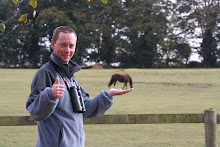Following the wash out on Saturday, we decided to revisit the sites we didn't manage to do in the rain.
First up was the lake at Estany d' Ivars. Despite not understanding the signs, the lake is a relatively new thing having been created over the last 10 years. It is mainly a large open body of water with a vegetated fringe. At the west end a small area of reeds and sedge held purple swamphen, 3 calling water rails and at least 2 pairs of territorial marsh harriers. At the eastern end is a larger reedbed, probably bigger that at Titchwell. The looked pretty dry and old although a marshy area next to it looked good. It had been horse grazed and was much more open with lots of muddy wet areas. At least 13 snipe came out and bluethroats apparently have been wintering.
We were able round the whole lake today and although there were still the same waterfowl, there were definitely more migrants about. For my sins I counted chiffchaffs (32) and there was an increase in swallows and a load of house martins (30) were new in. Several white stork platforms were in use and despite the cold wind they were bill clapping, nest building and mating.
The surrounding bushes were quiet, probably heaving in another month, but we had great close views of a couple of firecrests.
We had heard several penduline tits on the walk round and I was determined to see a couple that I had heard at the start of the walk. I could hear them and see the bulrush seed blowing but they took an age to find. In the end we had decent views of the male.
We then revisited the stony plateau in search of sandgrouse again but by the time we got there the wind had picked up significantly making birding tricky. I had a good walk about but the wind was keeping the birds low. I didn't see and sandgrouse, warblers or wheatear but a green sand was on a small flooded area.
On the way back to the main road, Rachael picked up our last new species of the trip, 2 stone curlews sheltering on the edge of a field.
At the end of 4.5 days we ended up with a trip total of 114 species (8 lifers) which I think is pretty good.
We got to see lots of different habitats all a short distance from our base in Lleida. The roads are good and very quiet making travelling very easy. A short return trip in the spring sometime to see the plains alive with larks is definitely on the cards















































